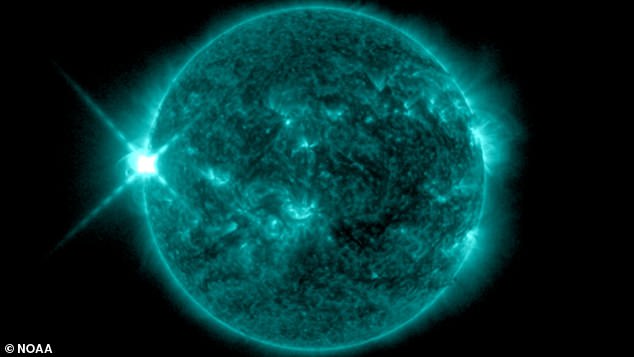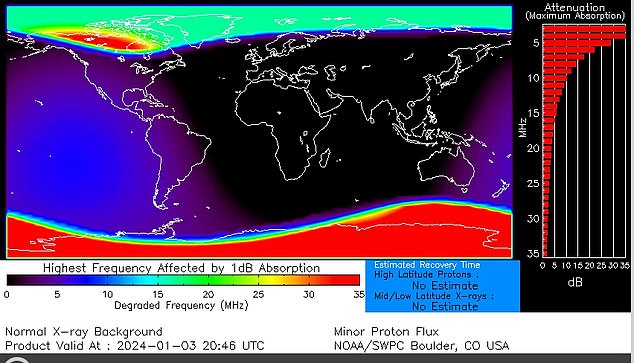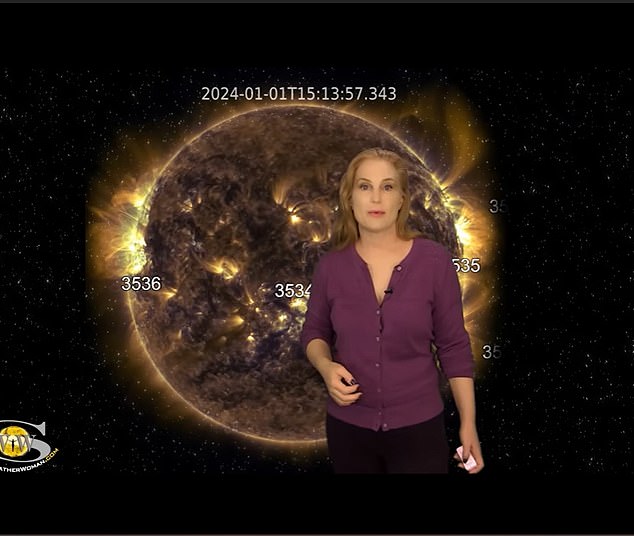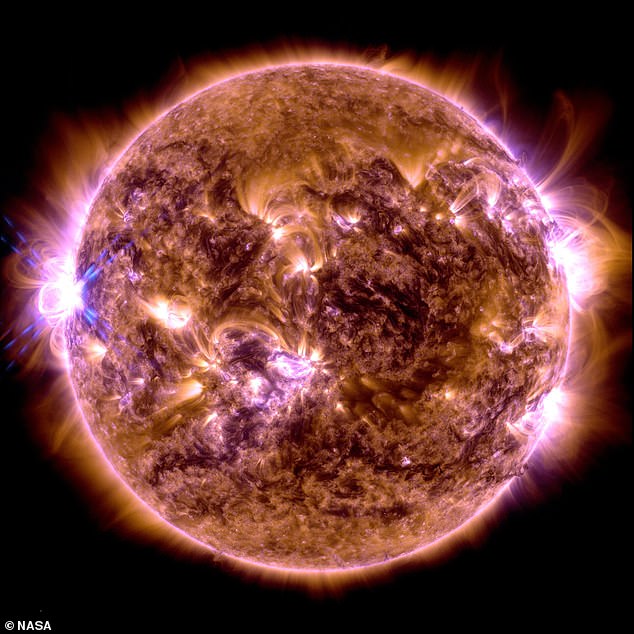Sun's strongest energy explosion in six years 'stuck in traffic': Physicists reveal weak solar winds causing slowdown – but say some VHF radios and Starlink satellites disrupted
The world waited Tuesday as billions of particles released by the sun on New Year's Eve were set to hit Earth, but one expert said the solar storm was “stuck in traffic.”
Dr. Tamitha Skov told DailyMail.com that the solar wind flows ahead of the solar storm, or coronal mass ejection (CME), did not have enough strength to move forward at the expected pace.
Skov said that “the radiation storm has increased to an official S1 level,” and NOAA's Space Weather Prediction Center (SWPC) shows the possibility of radio frequency disruption on Wednesday and Thursday.
She also revealed it that some of Earth's technology felt parts of the storm – radio frequencies used by marine radios, possibly Starlinks and specific television broadcasts, were disrupted 'for a short time'.

Dr. Tamitha Skov told DailyMail.com that the solar wind flow before the solar storm did not have enough strength to move forward at the expected speed. But she said solar activity is possible for the rest of the week
CMEs can eject billions of tons of corona material from the sun's surface.
The edge of the storm tests behind the front must pass beyond Earth's orbit before the high-energy particles can impact our planet.
“The solar wind flow before the storm was slower than expected, causing the storm to weaken,” Skov told DailyMail.com
“Just as slow traffic on a highway causes a faster car that is overtaking it to be forced to slow down and travel at almost the same speed as the slower traffic in front of it.”
SWPC's warning notes that potential impacts include “minor effects on polar HF (high frequency) radio propagation, resulting in fades at lower frequencies.”
“The minor impacts to Polar HF mainly relate to the radiation storm causing deterioration of high-frequency radio and GPS navigation signals for those navigating and communicating across the polar regions,” Skov said.
'Radiation storms affect the polar regions most intensely due to the fact that Earth's magnetic shield is 'open' to these radiation storm particles at the poles.”


This month's outburst was the strongest burst of energy from the sun since 2017, according to NASA, which captured the event with its Solar Dynamic Observatory – a probe that has been exploring the sun since its launch in 2010.


Skov said “the radiation storm has increased to an official S1 level” and NOAA's Space Weather Prediction Center (SWPC) shows the possibility of radio frequency interference on Wednesday and Thursday
This month's outburst was the strongest burst of energy from the sun since 2017, according to NASA, which captured the event with its Solar Dynamic Observatory – a probe that has been exploring the sun since its launch in 2010.
Images show a glowing region on the Sun brightening before exploding and releasing an X5 flame (the highest level) from the edge of the massive star.
SWPC clarified that the general public had nothing to fear, but found that the first radiation explosion on December 31 caused power outages over the Pacific Ocean.
The agency had predicted that Earth would experience a small geomagnetic storm on Tuesday, a temporary disturbance in Earth's magnetosphere caused by a shock wave from the solar wind.
“The risk NOAA/SWPC mentions is radio outage at a specific level, which often affects GPS reception, but not always,” Skov said.
She further explained that the New Year's
“I talk about this in my latest forecast (which is why I tell pilots to check ICAO advisories for updates on the impact on radio communications and GPS navigation),” Shav said.


Skov told DailyMail.com: 'Just as slow traffic on a highway means that a faster car overtaking it will slow down violently and travel at almost the same speed as the slower traffic ahead'


Skov also revealed that some of Earth's technology sensed parts of the storm – radio frequencies used by maritime radios, possibly Starlinks and specific television broadcasts were disrupted 'for a short time'.
The physicists also noted that the same outburst caused the deterioration of television broadcast systems that use ultra-high frequency (UHF) radio for over-the-air transmission.
And SpaceX's Starlink signals may also be disrupted “for a short time.”
“The radio waves (called 'radio bursts') affect our reception of satellite signals such as GPS and even HF radio communications,” says Skov.
'It's like the sun is literally screaming at us during a solar flare.
'This 'scream' is much louder than our satellites can 'chirp' and therefore temporarily drowns out the satellite signals.
“That said, the sun doesn't always scream at the exact frequencies that affect GPS signals.”
